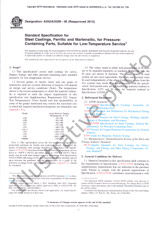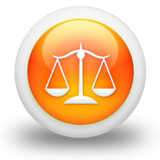We need your consent to use the individual data so that you can see information about your interests, among other things. Click "OK" to give your consent.
ASTM G127-15(2023)
Standard Guide for the Selection of Cleaning Agents for Oxygen-Enriched Systems
Translate name
STANDARD published on 1.3.2023
The information about the standard:
Designation standards: ASTM G127-15(2023)
Publication date standards: 1.3.2023
SKU: NS-1103744
The number of pages: 6
Approximate weight : 18 g (0.04 lbs)
Country: American technical standard
Category: Technical standards ASTM
The category - similar standards:
Annotation of standard text ASTM G127-15(2023) :
Keywords:
chlorofluorocarbon, cleaning, compatibility, contaminant, detergent, non-volatile residue, oxygen-enriched environment, oxygen system, ozone depletion, rinsing, solvent,, ICS Number Code 71.100.40 (Surface active agents)
Additional information
| Significance and Use | ||||||||||||||||||||||||||||||||||||||||||
|
3.1?The purpose of this guide is to provide information that may be considered when selecting and qualifying a cleaning agent for oxygen-enriched systems. 3.2?Insufficient cleanliness can result in the ignition of contaminants or components by a variety of mechanisms. Therefore, an acceptable level of contamination for each condition of use in oxygen-enriched service should be defined. The acceptable level of contamination may depend on various factors, such as: 3.2.1?The nature and type of the contaminants, 3.2.2?The location and degree of contamination, 3.2.3?The type of substrate material, 3.2.4?The configuration and end use of the equipment or part to be cleaned, and 3.2.5?The operating parameters of the oxygen-enriched system (pressure, temperature, phase, concentration, fluid velocity, etc.). |
||||||||||||||||||||||||||||||||||||||||||
| 1. Scope | ||||||||||||||||||||||||||||||||||||||||||
|
1.1?The purpose of this guide is to establish a procedure to select cleaning agents, both solvents and water-based detergents, for oxygen-enriched systems. This includes laboratory-scale tests for cleaning effectiveness, materials compatibility, and oxygen compatibility. 1.2?The effectiveness of a particular cleaning agent depends upon the method by which it is used, the nature and type of the contaminants, and the characteristics of the article being cleaned, such as size, shape, and material. Final evaluation of the cleaning agent should include testing of actual products and production processes. 1.3?Different cleaning agents may be required for different cleaning activities, such as aqueous ultrasonic cleaning, spray cleaning, hand wiping, and flushing of oxygen lines in field applications. 1.4?This standard does not purport to address all of the safety concerns, if any, associated with its use. It is the responsibility of the user of this standard to establish appropriate safety, health, and environmental practices and determine the applicability of regulatory limitations prior to use. 1.5?This international standard was developed in accordance with internationally recognized principles on standardization established in the Decision on Principles for the Development of International Standards, Guides and Recommendations issued by the World Trade Organization Technical Barriers to Trade (TBT) Committee. |
||||||||||||||||||||||||||||||||||||||||||
| 2. Referenced Documents | ||||||||||||||||||||||||||||||||||||||||||
|
We recommend:
Updating of laws
Do you want to be sure about the validity of used regulations?
We offer you a solution so that you could use valid and updated legislative regulations.
Would you like to get more information? Look at this page.




 Cookies
Cookies
